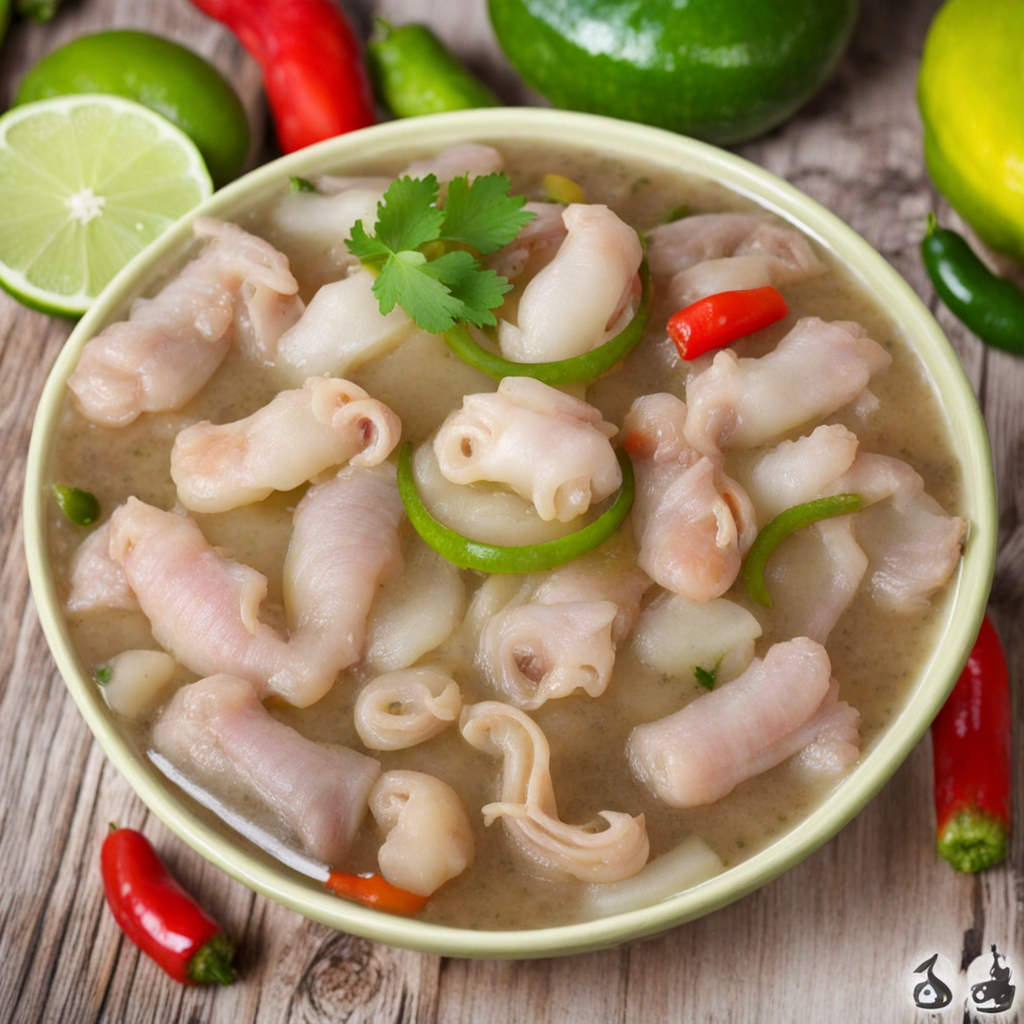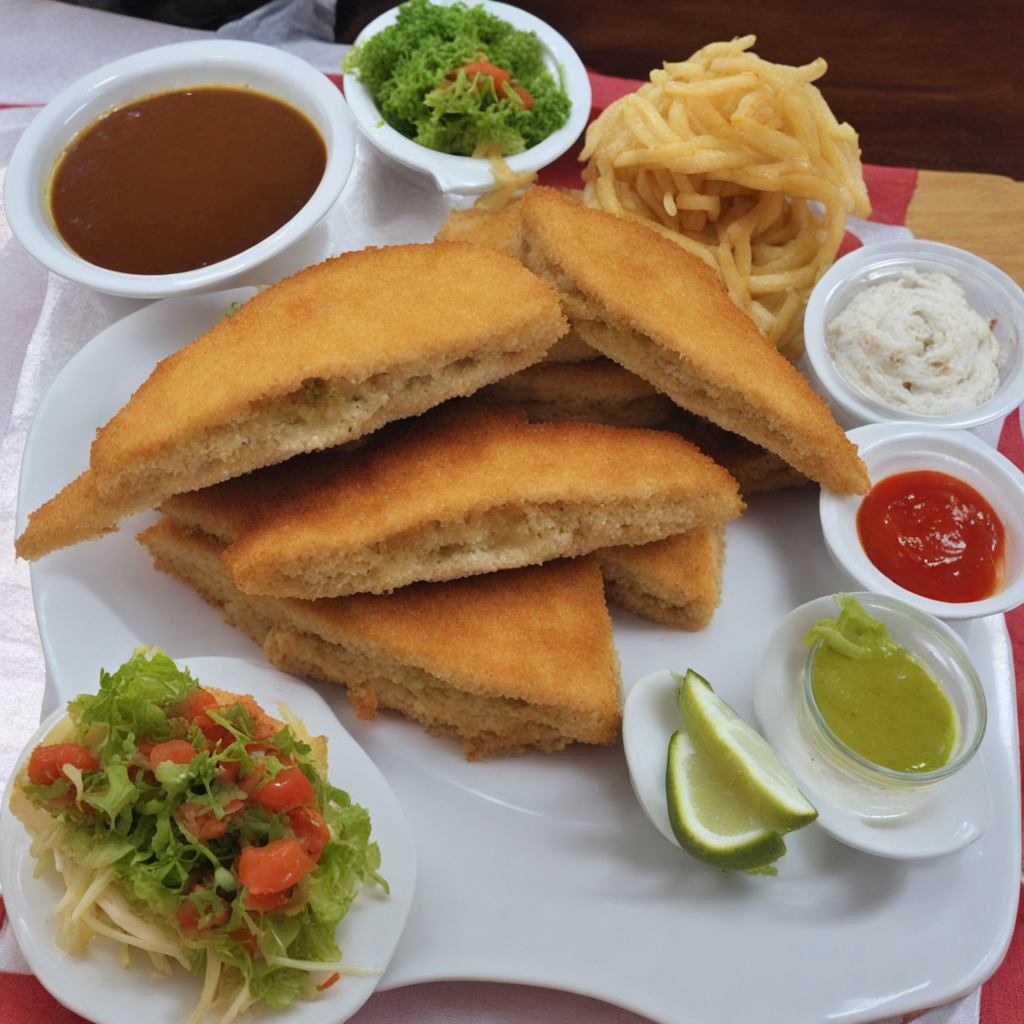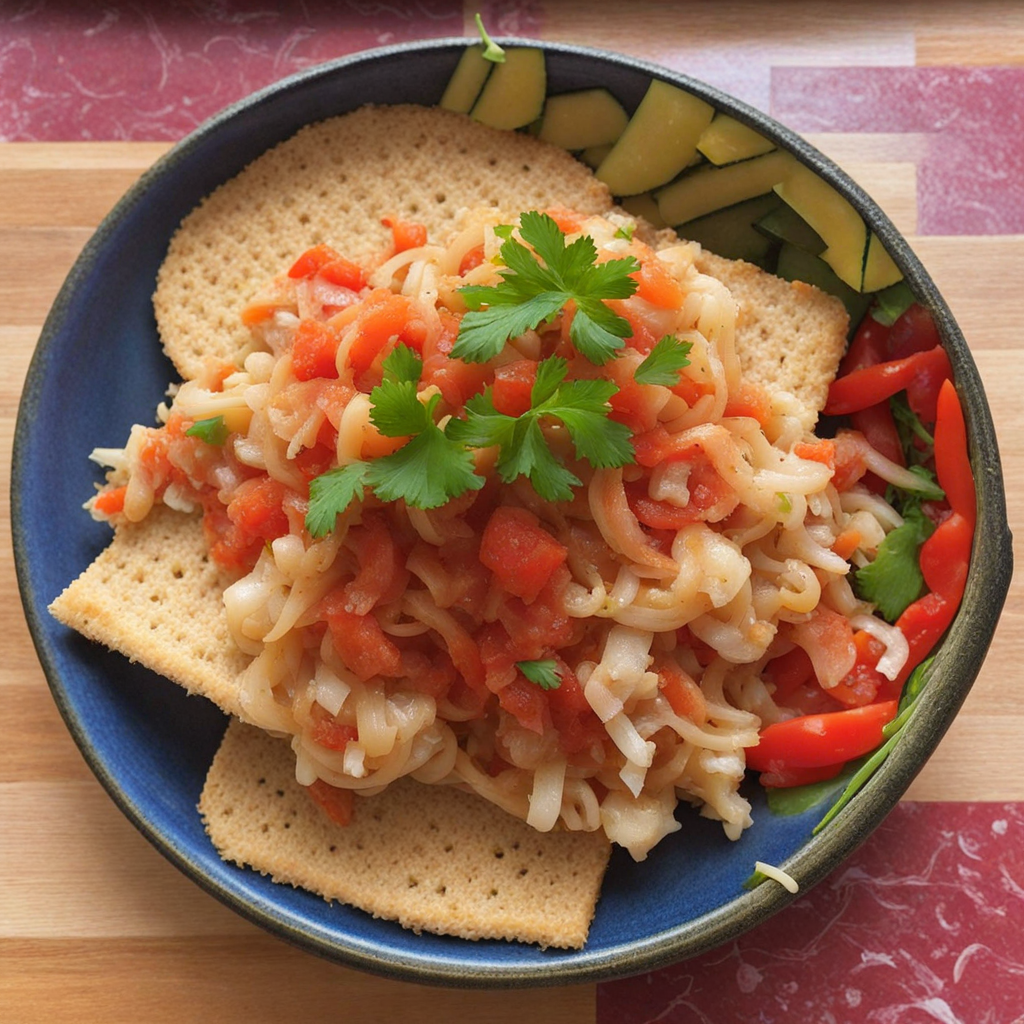Souse
Souse is a vibrant and refreshing dish that originates from Trinidad and Tobago, offering a delightful blend of flavors and textures that captures the essence of Caribbean cuisine. Typically made from pickled meat, often chicken or pork, the dish is marinated in a tangy mixture of lime juice, vinegar, and a medley of spices. This process not only tenderizes the meat but also infuses it with a zesty brightness, making every bite a tantalizing experience. The inclusion of ingredients such as onions, cucumbers, and peppers adds a crunchy freshness that complements the savory richness of the meat, creating a perfect balance of flavors. In addition to its delicious taste, Souse is often served chilled, making it a popular choice for gatherings and outdoor events, especially in the warm Caribbean climate. The dish is typically accompanied by a side of homemade hot sauce, allowing each diner to adjust the heat level to their preference. This aspect of the dish emphasizes the importance of personalization in Trinidadian cuisine, where each household may have its own unique twist on the traditional recipe. The vivid presentation, often garnished with fresh herbs, invites diners to dive into this colorful dish that is as pleasing to the eye as it is to the palate. What sets Souse apart is its versatility; it can be enjoyed as a main course or as a refreshing appetizer. The dish embodies the spirit of Trinidad and Tobago's culinary heritage, showcasing the island's love for bold flavors and communal dining. Whether you're savoring it at a lively street market or enjoying it at a family gathering, Souse promises a taste of the Caribbean that is both unique and unforgettable, inviting food lovers to explore the rich tapestry of flavors that define this beloved dish.
How It Became This Dish
The History of Souse in Trinidad and Tobago #### Origins of Souse Souse, a beloved dish in Trinidad and Tobago, is a culinary reflection of the islands’ rich history, blending various cultural influences that have shaped the Caribbean. Its origins can be traced back to the colonial era, influenced by African, European, and Indigenous culinary practices. The dish primarily consists of pickled meats, often chicken or pork, served with a tangy vinaigrette, and occasionally accompanied by vegetables. The term “souse” itself is derived from the Old French word “sous,” which means “to soak.” This etymology highlights the dish’s method of preparation, where meats are soaked in a mixture of vinegar, lime juice, and spices, creating a distinct flavor profile. The dish is often associated with the practice of "pickling," which was essential for preservation in the warm Caribbean climate before refrigeration became commonplace. #### Cultural Significance Souse holds a significant place in the culinary landscape of Trinidad and Tobago. It embodies the resourcefulness and creativity of the local population, particularly in the way it makes use of available ingredients. Traditionally, souse was made from the less desirable cuts of meat, which were transformed into a delicacy through the process of marination. This practice is reminiscent of similar dishes found in various cultures, where preservation and flavor enhancement were crucial for survival and celebration. In Trinidadian culture, souse is more than just a meal; it is often associated with social gatherings, festivities, and local celebrations. It is commonly served at parties, barbecues, and especially during Carnival season, where it is enjoyed as a popular street food. The dish is often accompanied by local staples such as bread, cassava, or even rice, which complements the piquant flavor of the pickled meat. #### Development Over Time As Trinidad and Tobago evolved through the years, so did the dish of souse. Initially, souse was predominantly made with pork and chicken, but over time, variations have emerged, using fish and other meats. This evolution reflects the changing tastes and availability of ingredients on the islands, as well as the influence of global culinary trends. The 20th century saw a significant shift in the culinary landscape of Trinidad and Tobago, as migration and globalization brought new flavors and cooking techniques to the islands. The introduction of different spices and marinades from various immigrant communities contributed to the transformation of traditional souse into a more diverse culinary offering. For instance, the use of mango, cucumber, and hot peppers has become common in modern souse recipes, adding layers of flavor and a vibrant presentation. Moreover, the rise of food trucks and street vendors has played a crucial role in popularizing souse among a younger generation. As the fast-paced lifestyle of urban Trinidadians took hold, souse became a convenient and delicious option for those on the go. This accessibility has led to an increase in innovative interpretations of the dish, with chefs experimenting with fusion elements and contemporary cooking techniques. #### Ingredients and Preparation The traditional preparation of souse is relatively simple yet requires an understanding of flavor balancing. The typical ingredients include: - Meat: Commonly pork or chicken, but fish like snapper is also used in some variations. - Acidic Marinade: A mixture of vinegar, lime juice, or a combination of both to tenderize and flavor the meat. - Seasoning: A blend of spices such as garlic, black pepper, allspice, and local herbs like chadon beni (also known as culantro). - Vegetables: Cucumber, onions, and peppers are often added for crunch and freshness. To prepare souse, the meat is cleaned and boiled, then marinated in the acidic mixture along with the spices and vegetables. It is typically served chilled or at room temperature, allowing the flavors to meld beautifully. #### Modern Interpretations In contemporary Trinidadian cuisine, souse continues to adapt and evolve. Chefs and home cooks alike are exploring new flavor profiles and presentation styles. Some modern interpretations include: - Souse Salad: A fresh take on the traditional dish, combining pickled meats with mixed greens, citrus, and other seasonal vegetables. - Souse Tacos: Infusing Mexican influence, some vendors serve souse in soft tortillas, topped with avocado and spicy salsa, creating a fusion of flavors. - Souse Bowls: This trend incorporates various grains, such as quinoa or rice, topped with pickled meat, fresh vegetables, and a drizzle of tangy sauce. These adaptations showcase the versatility of souse and its ability to resonate with diverse palates, while still honoring the traditional roots of the dish. #### Conclusion Souse remains a quintessential dish in Trinidad and Tobago, symbolizing the islands' rich cultural heritage and culinary diversity. From its humble beginnings as a method of preserving meat to its modern interpretations enjoyed at festivals and gatherings, souse has woven itself into the fabric of Trinidadian life. As the world continues to change and evolve, so too will souse, reflecting the dynamic nature of Trinidad and Tobago's culinary scene. Its ability to adapt while retaining its traditional essence makes it not only a meal but a celebration of history, culture, and community. Whether enjoyed in a bustling market, at a family gathering, or as a street food delight, souse is a testament to the enduring spirit of Trinidadian cuisine—a flavor that resonates with both locals and visitors alike.
You may like
Discover local flavors from Trinidad And Tobago







